Of course, the Cyclades pig is famous, but from a top celebration of traditional food, it is now extremely rare, which make Syssera, azonara, sausage, louza, and the pork meatballs seem like exotic dishes, but, when you have earned the privilege of sitting around a set table with the wonderful cooks of the Mykonos Gastronomy Club, all the mysteries of the deepest, and therefore the authentic, soul of the island are illuminated.
At dinner, the cooks inspired by the Cycladic traditional way of life are Irini Zouganelis, Louda Onouferko, Yiannis Gavalas, Panagiotis Menardos, Nikos Koukiasas and, of course, Dimitris Rousounelos.
Dimitris, among others, has authored the book "Mykonian Cooking", which we turn to every time we want to know about the traditional food of Mykonos, what the natives know and have not told us, and, of course, pork carcasses in Mykonos.
The thin slices of louza are definitely a great introduction. The traditional sausage of the Cyclades islands and Cyprus - which Dimitris describes as "the delicacy of Mykonian gastronomy", is a product of the winter pig slaughterhouses. It is a fillet baked in the sun, seasoned with thrumpi, oregano and salt.
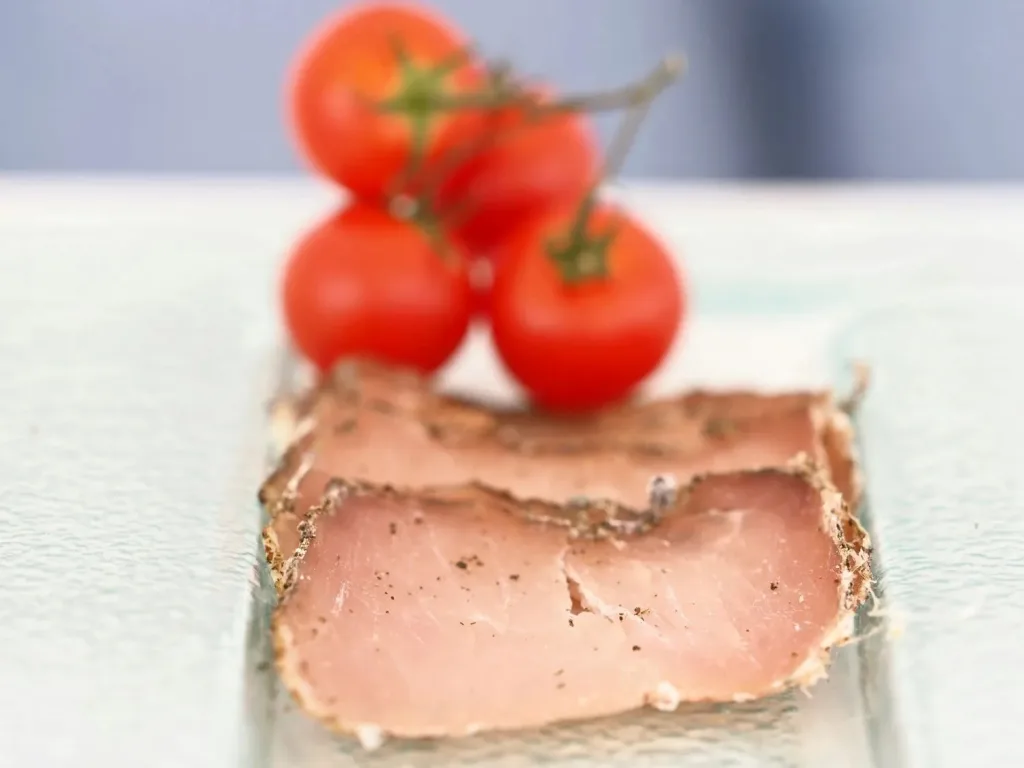
Pork carcasses traditionally occurred as soon as the weather got cold, from October until Christmas, and were the main source of deliciousness and food enjoyment all year round. Nothing was wasted on the pig each family raised for this purpose; everything was useful, from the skin to the bones. Even the bladder of the animal, inflated and dried in the sun, became a natural child's toy.
The catalyst for all pork carcass dishes was the lard, which not only went into the food and flavoured it, but also he was already maintaining them for many months. Thus, scallions and other wild greens, yachni potatoes and fennel beans became much more appetising when cooked with lard, and the traditional onion pie was flavoured with lard. Like the rafiolaki with tyrovolia (the fermented cheese denatured into a pulp) and a lard idea that came to this mock dinner of pork carcasses.
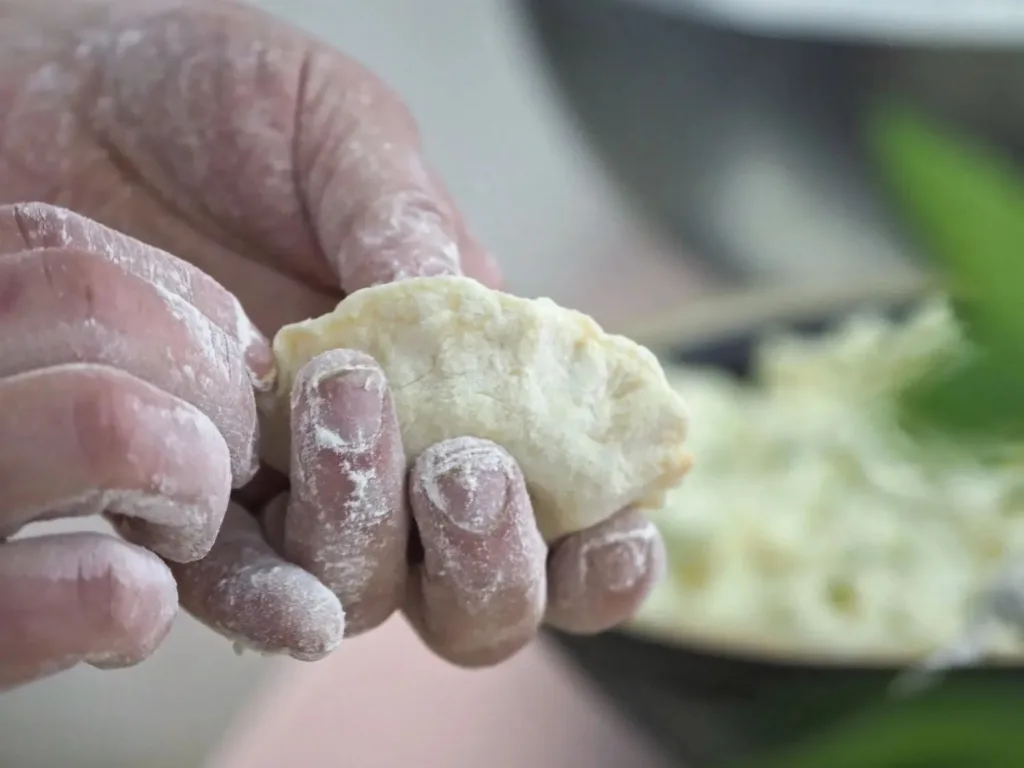
Pig carcasses were a bountiful feast for those involved in their personal labour at the time, as many dishes were prepared and consumed on the spot for reward and entertainment.
Like the sausage. They prepared it to taste the salt and spices of the pork filling, hand-cut with criss-cross knives, that would fill the pig's intestines. This was the meze-reward of the participants in the process of making the Mykonian sausage, which was then baked in the sun and salted, and not smoked.
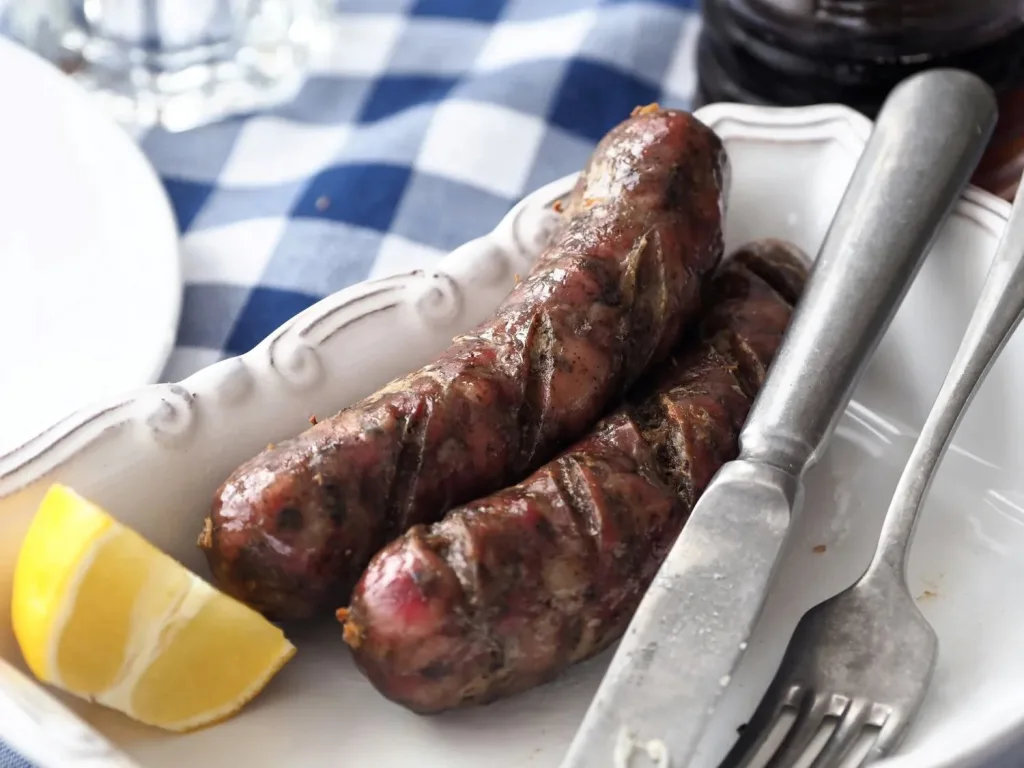
If it was left hanging long enough to dry sufficiently, it was eaten like slices of salami. Now, the Mykonian by choice, Luda, used this sausage in a different way. She kneaded in her own tradition that she brought with her from the northern shore of the Black Sea, a piroshki dough, which enclosed the cooked sausage filling inside.
The manual processing of minced pork with crossed knives is now done mechanically, with less effort. Irini, however, still invests in her pork meatballs to gain deliciousness. She always cuts the minced meat with the crossed knives so that when you taste the meatball, you can feel that the meat dominates its texture and taste.
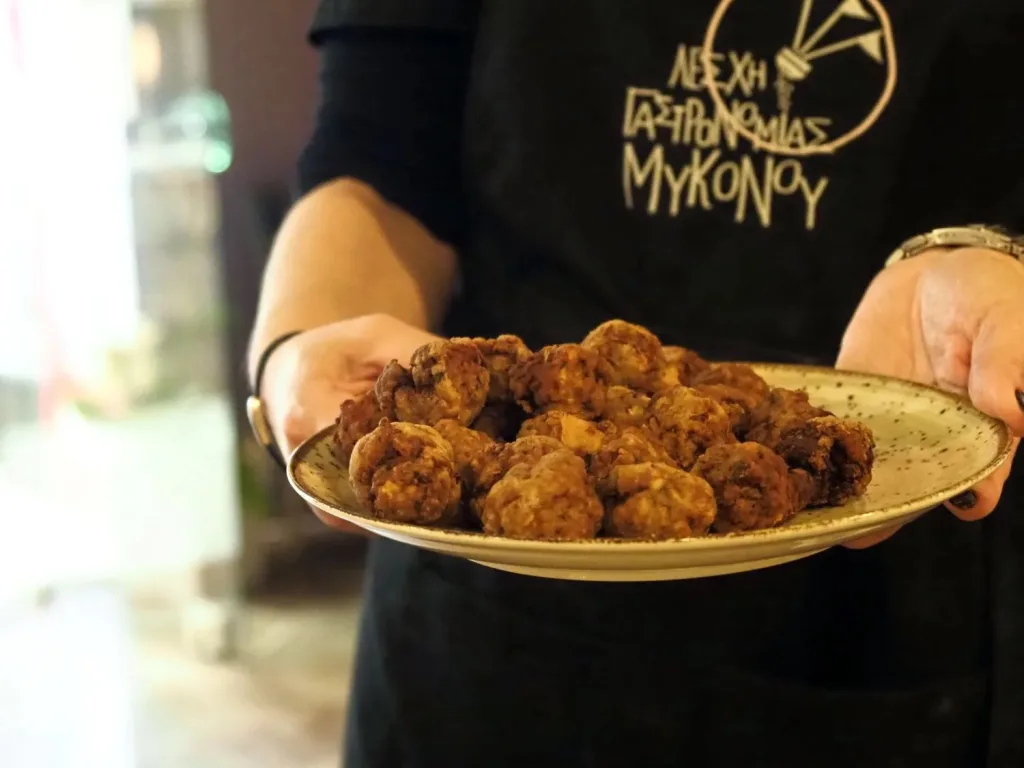
The coarsely chopped neck mince is mixed with wet stale bread crumbs, egg, chopped dry onions, two or three cloves of garlic, ouzo, thrumpi, oregano, salt and pepper. They are shaped with wet or oiled hands, floured and fried in olive oil over medium to high heat.
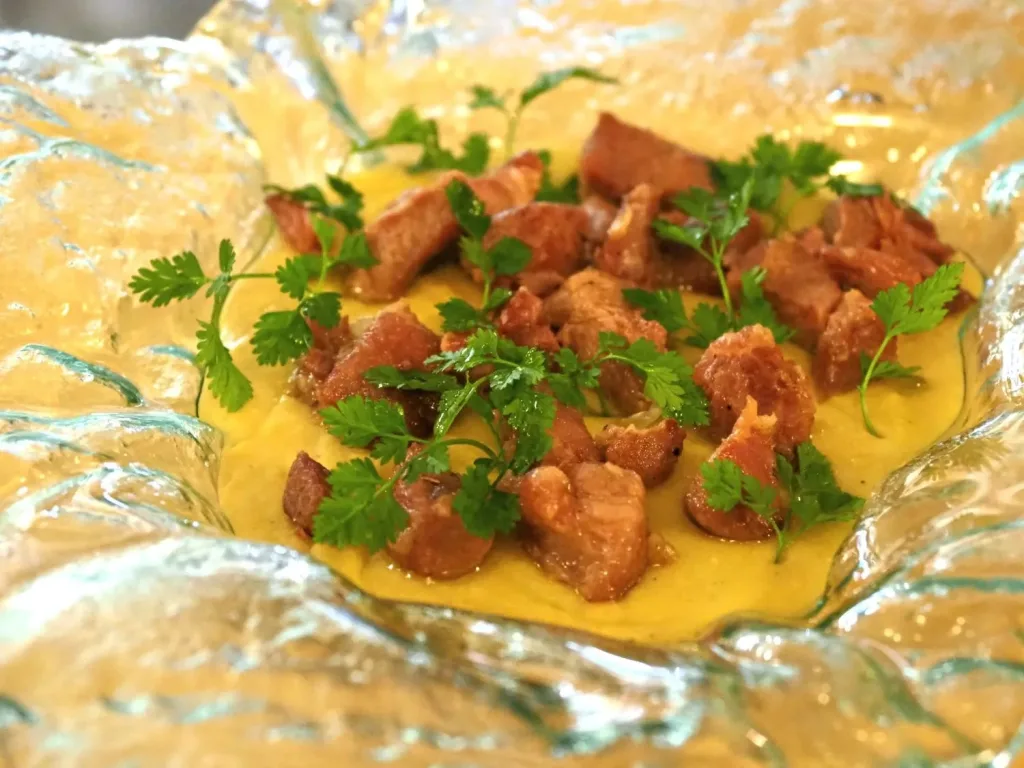
The name of this pork carcass dish now arriving at our table reminds us of the sound the meat makes as it sizzles in the pan. Fava beans and myronia beans. They are also called syglina, but syssera is a name more suitable to their nature, as they are fried pieces of pork neck (baked in the sun and air, seasoned with salt, thrumpi, oregano, spice and pepper) and ribs, which release the lard, inside in which they are preserved for a long time.
The ancients restored these two raw materials, meat and lard, to an edible state with all their gravity. Panagiotis Menardos, however, serves this traditional food to the unfamiliar visitors of Mykonos and his "M-eating" restaurant, making a lighter variation of the ancestral process.
Of course, there is lard, but in half the amount. The other half is made up of olive oil, which is added together with the specially processed pork neck meat and a few litres of water.
In the boiling, he put onion, spice, and laurel, the ones with which the syssera were traditionally cured. The fava bean has a name of origin since it was brought from his small homeland, Heraklia, by Yiannis Gavalas, the initiator of "Araklia", one of the most delicious and atmospheric corners of the Cyclades.
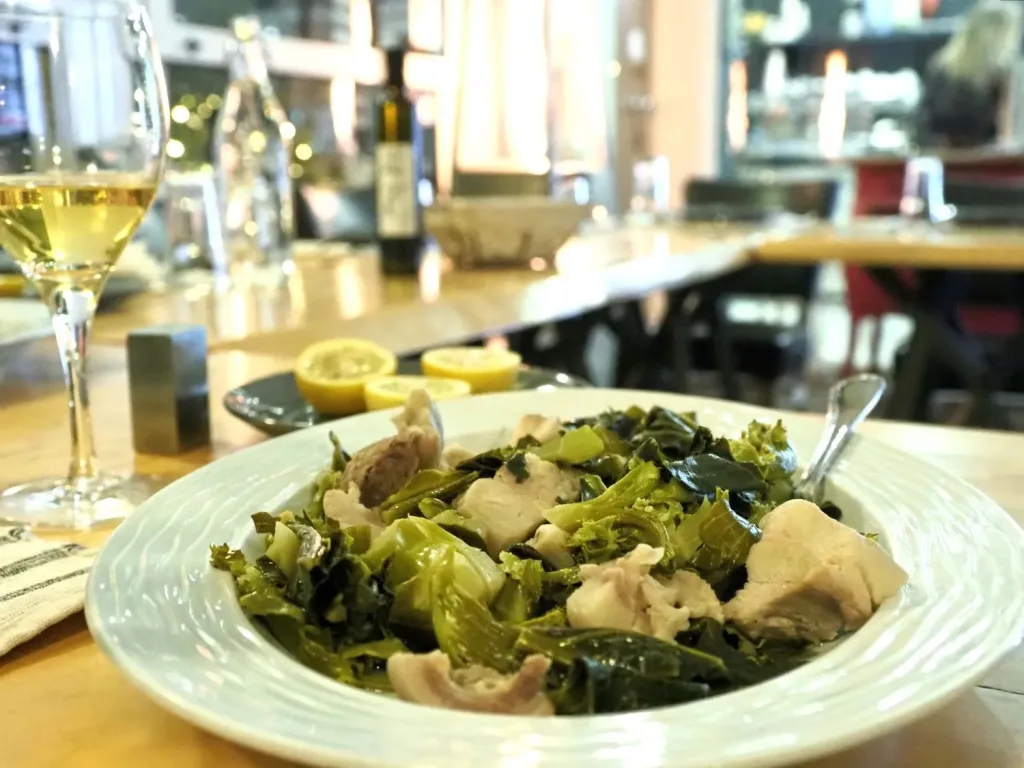
The azonara, which came to us with cabbage, is the pork leg, from which most of the meat has been removed during the slaughtering process, and the little remaining has been preserved, along with the bone and the skin in the joint.
On the eve of cooking, they rinse it and leave it in the water until the next day, when they boil it on high heat, taking care of its good peeling. When the soft parts are boiled, they also throw the greens into the juice to boil them.
They usually match it with cabbages, as they say in Mykonos, cabbages, or with provasia if it has rained and they have grown early. It is the food of the traditional Mykonian table on New Year's Eve.
The pig's head is the crowning glory of pork belly dishes. It comes out last and is one of the characteristics of Mykonian cuisine. Here, they don't make it thick, as usual, but they bone her and chop up her limbs, cheeks, ears, and tongue. Independently delicious dish, beyond lemon, salt and pepper, in its simplicity and naturalness.
And like everything, this sacramental dinner also ended sweetly with the famous Mykonian honey pie, baked by one of the goldsmith ladies of Ano Mera, Maria I. Hanioti, with special sensitivity and art.
This traditional sweet has imprinted on it the experience, the taste and the aesthetics of the household, but also the essence of the earth, as it is made of its basic elements: flour, curds, oil, honey, and fire.
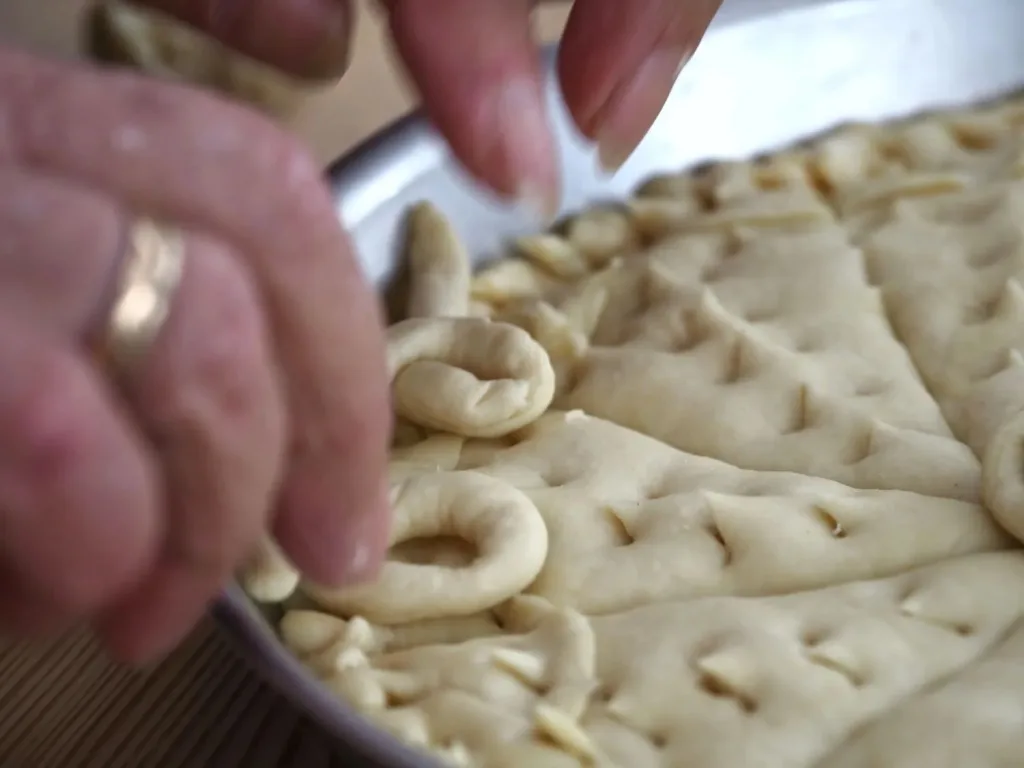
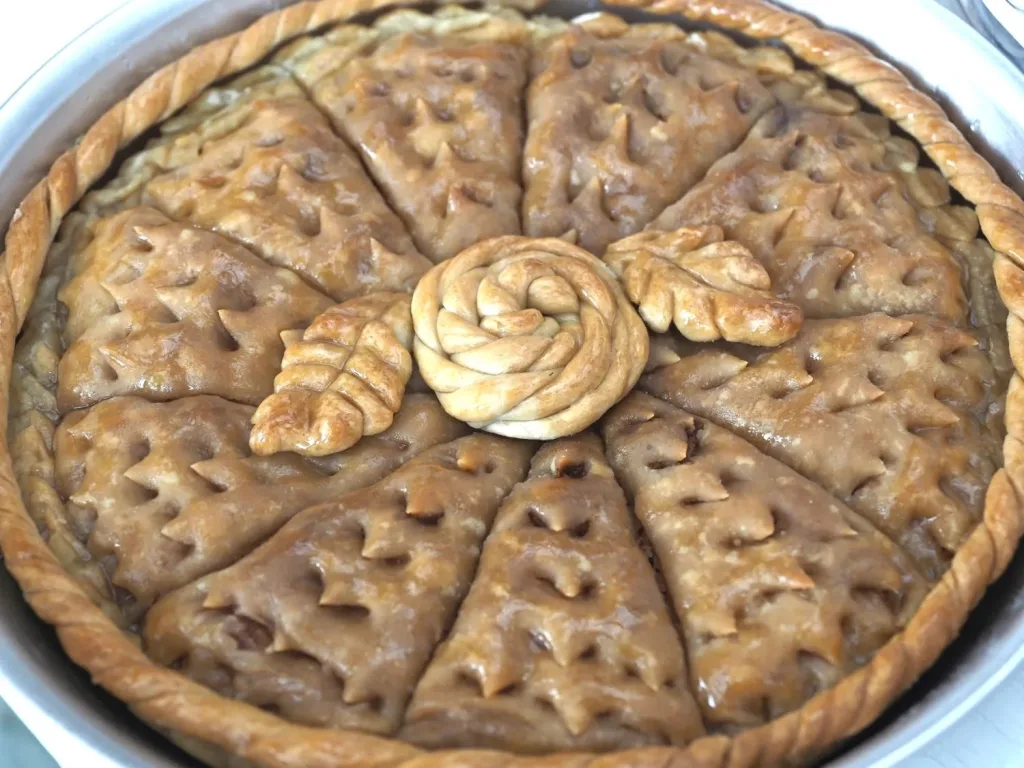
Nikos G. Mastropavlos is a journalist and creator of Eudemonia, a website dedicated to the culture of everyday pleasures in Greece and Cyprus.
READ MORE: Christmas in Vytina: The ultimate winter destination.

